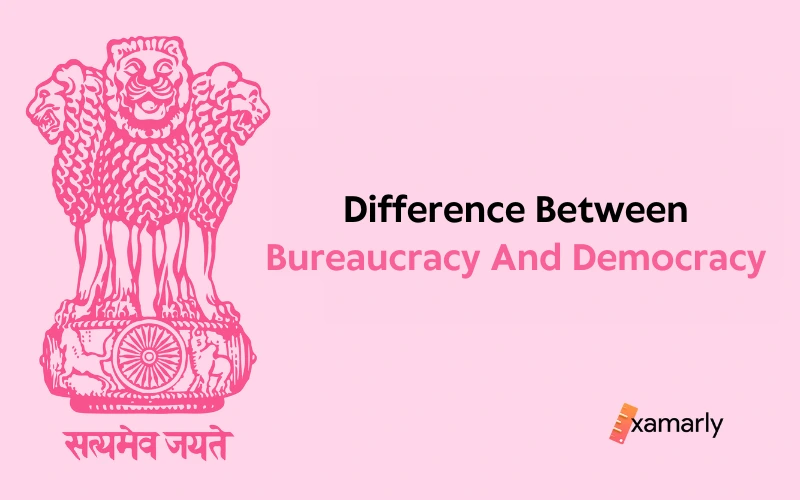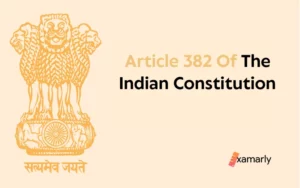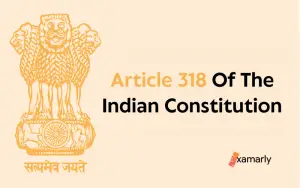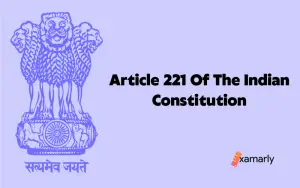An Overview
Welcome to our blog on the topic of “Difference Between Bureaucracy and Democracy.” In this blog, we will dive deep into the intricacies of these two political systems, exploring their similarities and differences, and examining the pros and cons of each.
Bureaucracy and democracy are two of the most commonly used political systems in the world, yet they are vastly different in their approach to governance.
Bureaucracy is often associated with a top-down, hierarchical structure, where power is concentrated in the hands of a small group of individuals. Democracy, on the other hand, is based on the principle of “power to the people,” where citizens have the right to participate in the decision-making process.
In this blog, we will explore the origins and evolution of bureaucracy and democracy, and how they have been implemented in different societies throughout history. We will also examine the strengths and weaknesses of each system, and consider the implications for modern society.
Whether you are a political science student, a UPSC aspirant, or simply someone interested in politics, this blog is a must-read for anyone looking to gain a deeper understanding of the two systems.
So, let’s begin our journey into the world of bureaucracy and democracy!
- An Overview
- What Is Bureaucracy?
- Origins Of Bureaucracy
- Evolution Of Bureaucracy
- Examples Of Bureaucracy
- Advantages Of Bureaucracy
- Disadvantages Of Bureaucracy
- What is Democracy?
- Origins Of Democracy
- Evolution Of Democracy
- Ancient Origins
- The Middle Ages
- The Enlightenment
- The Industrial Revolution
- The 20th Century
- Contemporary Democracy
- Examples Of Democracy
- Advantages Of Democracy
- Disadvantages Of Democracy
- Similarities Between Bureaucracy And Democracy
- Difference Between Bureaucracy And Democracy
- Bureaucracy And Democracy In India: A Complex Relationship
- The Strengths Of Bureaucracy In India
- The Weaknesses Of Bureaucracy In India
- The Strengths Of Democracy In India
- The Weaknesses Of Democracy In India
- Interaction Of Bureaucracy And Democracy In India
- Summing Up
- FAQs Related To Bureaucracy And Democracy
- What Is The Difference Between Bureaucracy And Democracy?
- How Does Bureaucracy Work In A Democratic Country?
- What Are The Benefits Of Bureaucracy?
- What Are The Drawbacks Of Bureaucracy?
- How Does Democracy Work In India?
- What Are The Benefits Of Democracy In India?
- What Are The Drawbacks Of Democracy In India?
- How Does Bureaucracy Affect Democracy In India?
- How Can Bureaucracy And Democracy Be Improved In India?
- What Role Do Citizens Play In Ensuring The Success Of Bureaucracy And Democracy In India?
What Is Bureaucracy?
Bureaucracy is a form of government in which power is exercised by appointed officials rather than elected representatives. It is characterised by a hierarchical structure, a set of rules and regulations, and a professional administrative staff.
Bureaucracies are typically found in large organisations, such as government agencies, corporations, and non-profit organisations.
Origins Of Bureaucracy
The origins of bureaucracy can be traced back to ancient civilisations, such as Egypt and China, where centralised systems of government were used to manage large populations and vast territories. The term “bureaucracy” was first used in the 18th century by French economist Francois Quesnay to describe the administrative system of the French monarchy.
During the 19th century, the industrial revolution led to the growth of large, complex organisations, such as corporations and government agencies, which required efficient systems of management. This led to the development of modern bureaucracy, which was characterised by a hierarchical structure, a set of rules and regulations, and a professional administrative staff.
Evolution Of Bureaucracy
The concept of bureaucracy as we know it today, however, developed during the 18th and 19th centuries in Europe. The French Revolution of 1789 marked the beginning of a new era in political thought, with the rise of the nation-state and the idea of citizenship.
The revolutionary government established a centralised bureaucracy to manage the affairs of the new state. This system was based on the principles of rationality, efficiency, and impartiality, and was designed to serve the needs of the people.
During the 19th century, the bureaucracy continued to evolve with the rise of industrialisation and the growth of government. Bureaucracies became larger and more complex, with more officials appointed to manage the increasing needs of society. This led to the development of specialised departments and agencies, each with its own specific responsibilities.
Today, bureaucracy is a common feature of modern government, with officials appointed to manage everything from healthcare and education to transportation and national security. While some criticise bureaucracy for its inefficiency and lack of accountability, others argue that it is necessary for the smooth functioning of government in a complex and rapidly changing world.
Examples Of Bureaucracy
Bureaucracies can be found in many different types of organisations, including government agencies, corporations, and non-profit organisations.
Some examples of government bureaucracy include the Internal Revenue Service (IRS), the Department of Motor Vehicles (DMV), and the Social Security Administration (SSA). Corporate examples include large companies like IBM, GE, and Walmart. Non-profit organisations like the Red Cross, UNICEF, and the American Cancer Society also have bureaucratic structures.
Advantages Of Bureaucracy
Bureaucracies have several advantages that make them well-suited to managing large organisations. These include:
- Efficiency: Bureaucracies are designed to be efficient, with a clear hierarchy of authority and a set of rules and regulations that guide decision-making. This can make it easier to get things done and avoid confusion and delays.
- Expertise: Bureaucracies are staffed by professional administrators who have the expertise and knowledge needed to make informed decisions. This can help ensure that the organisation is run in a competent and effective manner.
- Accountability: Bureaucracies are typically subject to oversight by elected representatives or other external authorities. This can help ensure that the organisation is accountable to the public and that its actions are transparent.
- Standardisation: Bureaucracies often establish a set of standard procedures that are followed by all employees. This can help ensure consistency in the way that the organisation conducts its business.
Disadvantages Of Bureaucracy
Despite their advantages, bureaucracies also have several disadvantages that can limit their effectiveness. These include:
- Rigidity: Bureaucracies are often slow to adapt to changing circumstances because of their rigid rules and regulations. This can make it difficult for the organisation to respond to new challenges or opportunities.
- Bureaucratic Red Tape: Bureaucracies are often criticised for their bureaucratic red tape, which can make it difficult for individuals and businesses to navigate the system and get things done.
- Lack of Flexibility: Bureaucracies lack flexibility because of their hierarchical structure and set of rules and regulations. This can make it difficult for the organisation to be responsive to the needs of its customers or clients.
- Lack of Innovation: Bureaucracies can resist change, making it difficult for the organisation to innovate and adapt to new technologies or business models.
- Lack of Responsiveness: Bureaucracies can be slow to respond to the needs of their customers or clients, which can lead to frustration and dissatisfaction.
- Lack of Accountability: Bureaucracies often lack accountability, making it difficult for the public to hold bureaucrats responsible for their actions. This can lead to a lack of transparency and can make it difficult for citizens to trust the government. Additionally, the complexity of bureaucratic procedures can make it difficult for citizens to understand the decision-making process and hold bureaucrats accountable.
- Inefficiency: Bureaucracies can be inefficient due to their complex procedures, multiple layers of hierarchy, and lack of incentives for bureaucrats to work efficiently. This can lead to long wait times and delays in service delivery, which can be frustrating for citizens and businesses.
- Cost: Bureaucracies can be expensive to maintain due to their large staff and complex procedures. This can lead to high taxes and government spending, which can be a burden for citizens and businesses.
What is Democracy?
Democracy is a form of government in which power is vested in the people and exercised through elected representatives. It is characterised by free and fair elections, the protection of individual rights and freedoms, and the rule of law.
There are several different types of democracy, including direct democracy and representative democracy.
Origins Of Democracy
The origins of democracy can be traced back to ancient Greece, where the city-state of Athens developed a system of government in which citizens participated directly in decision-making through the assembly. This system, known as direct democracy, was based on the idea that citizens should have a say in how they were governed.
During the 18th and 19th centuries, democracy began to spread throughout Europe and North America as a result of the Enlightenment and the Industrial Revolution. The Enlightenment emphasised the importance of reason, individual rights, and the rule of law, while the Industrial Revolution led to the growth of a middle class that demanded a greater say in government.
Evolution Of Democracy
Democracy, the idea that power should be vested in the people and exercised through elected representatives, has a long and complex history. The evolution of democracy can be traced back to ancient civilisations, but it has undergone significant changes and developments over time.
Ancient Origins
The origins of democracy can be traced back to ancient Greece, specifically the city-state of Athens in the 5th century BCE. The Athenian system of government, known as direct democracy, allowed citizens to participate directly in decision-making through the assembly.
However, this system was limited to adult male citizens and excluded women, slaves, and foreigners.
The Middle Ages
During the Middle Ages, democracy largely disappeared as monarchies and feudal systems dominated the political landscape of Europe. The idea of representative government, where citizens elect representatives to make decisions on their behalf, began to emerge during this time, but it was limited to a small group of elites and did not include the majority of the population.
The Enlightenment
During the 18th century, the Enlightenment brought about a renewed interest in democracy and the idea of individual rights. The Enlightenment thinkers such as John Locke, Montesquieu and Jean-Jacques Rousseau, emphasised the importance of reason, the rule of law, and the protection of individual rights in government. These ideas laid the foundation for the development of modern democracy.
The Industrial Revolution
The Industrial Revolution of the 19th century brought about significant social and economic changes that led to the growth of the middle class. This middle class, along with other social and political movements, began to demand a greater say in government and pushed for the expansion of suffrage and the development of representative democracy.
The 20th Century
In the 20th century, democracy continued to evolve and spread throughout the world. The two World Wars led to the downfall of monarchies and dictatorships, and many countries transitioned to democratic forms of government. In addition, decolonisation led to the emergence of democratic governments in newly independent countries.
Contemporary Democracy
Today, democracy is the most popular form of government in the world, with more than 150 countries being classified as democratic. However, the evolution of democracy is not over, and it continues to adapt and change in response to new challenges such as globalisation, the rise of populism, and the increasing role of technology in the political process.
The evolution of democracy is a complex and ongoing process that historical, social, and economic factors have shaped. From its ancient origins in Athens to its contemporary forms, democracy has undergone significant changes and developments over time.
Despite its flaws, democracy remains the most popular form of government in the world because it gives citizens a voice in how they are governed.
Examples Of Democracy
- Direct Democracy: Switzerland is a good example of a country that practices direct democracy. In Switzerland, citizens have the right to propose and vote on laws and constitutional amendments through the use of referendums.
- Representative Democracy: The United States is a good example of a country that practices representative democracy. In the U.S., citizens elect representatives to make decisions on their behalf at the federal, state, and local levels.
- Parliamentary Democracy: The United Kingdom is a good example of a country that practices parliamentary democracy. In the UK, citizens elect representatives to the House of Commons, who then form a government and make decisions on their behalf.
- Presidential Democracy: India is a good example of a country that practices presidential democracy. In India, citizens elect a president who serves as both the head of state and the head of government.
Advantages Of Democracy
- Representation: Democracy allows citizens to elect representatives who will make decisions on their behalf. This means that the government is more likely to reflect the views and interests of the majority of the population.
- Accountability: In a democracy, elected representatives are accountable to the people. This means that they can be removed from office if they do not perform well or if they do not represent the views and interests of their constituents.
- Participation: Democracy encourages citizens to participate in the political process. This can lead to a more informed and engaged citizenry, which can help to ensure that government is responsive to the needs of the people.
- Protection of Individual Rights: Democracy protects individual rights and freedoms, such as freedom of speech, freedom of religion, and the right to a fair trial.
- Stability: Democracy provides a stable form of government because it allows for peaceful transitions of power.
Disadvantages Of Democracy
- Slow Decision-Making: Democracy can be slow and inefficient because decisions must be made through a process of negotiation and compromise. This can make it difficult to respond quickly to changing circumstances.
- Majority Rule: In a democracy, the majority rules. This means that the rights and interests of minorities may not be protected.
- Voter Apathy: Democracy depends on the participation of citizens, but voter turnout can be low in some countries. This can lead to a government that is not truly representative of the population.
- Influence of Money: In some democracies, wealthy individuals and special interest groups can use their money to influence the political process, which can lead to a government that is not truly representative of the population.
- Short-Sightedness: Democracy can lead to short-sighted decision-making as politicians may prioritise winning the next election over long-term planning and sustainable policies. This can lead to policies that are not in the best interest of the country or its citizens in the long run.
You Might Also Like: Difference Between Democracy And Republic
Similarities Between Bureaucracy And Democracy
Bureaucracy and democracy are similar to each other in the following ways:
- Both bureaucracy and democracy involve decision-making processes and systems of governance.
- Both systems have a hierarchical structure with different levels of authority.
- Both systems involve the participation of citizens in some way.
- Both systems have rules and regulations that must be followed.
- Both systems have a system of checks and balances to ensure accountability.
- Both systems are designed to serve the needs and interests of citizens.
- Both systems involve the delegation of power to elected or appointed officials.
- Both systems require transparency and openness in decision-making.
- Both systems aim to promote the public good.
- Both systems involve the use of resources to achieve goals and objectives.
Difference Between Bureaucracy And Democracy
The differences between bureaucracy and democracy can be understood in a comprehensive manner through the table provided below.
| Feature | Bureaucracy | Democracy |
|---|---|---|
| Definition | A system of government by appointed officials | A system of government by the people, through elected representatives |
| Decision-Making Process | Decisions are made by appointed officials, following rules and regulations | Decisions are made by elected representatives, through debate and voting |
| Power Structure | Power is concentrated at the top of the hierarchy | Power is distributed among the people |
| Transparency and Accountability | Bureaucracies often lack transparency and accountability, making it difficult for citizens to hold officials accountable | Decisions and actions of elected representatives are open to the public and are accountable to citizens |
| Efficiency | Bureaucracies can be slow and inefficient due to complex procedures and a lack of incentives for officials | Democracies can be more efficient as elected representatives are accountable to citizens and work to serve their needs |
| Flexibility | Bureaucracies can be inflexible due to rigid rules and regulations | Democracies can be more flexible as elected representatives can respond to changing public needs and opinions |
| Representation | Bureaucracies are not directly representative of the citizens they serve | Democracies are representative of the citizens they serve as elected representatives are chosen by citizens |
| Participation | Participation in bureaucratic decision-making is limited to appointed officials | Participation in democratic decision-making is open to all citizens through voting and public discourse |
| Innovation | Bureaucracies can be resistant to change and lack innovation | Democracies can encourage innovation as elected representatives are responsive to changing public needs and opinions |
| Cost | Bureaucracies can be expensive to maintain due to large staff and complex procedures | Democracies can be less expensive as elected representatives are accountable to citizens and work to minimise government spending |
You Might Also Like: Difference Between Marxism and Leninism
Bureaucracy And Democracy In India: A Complex Relationship
India, a vast and diverse country, is known for its robust democracy and entrenched bureaucracy. While both democracy and bureaucracy are essential for the functioning of any modern state, their relationship in India has been complex and dynamic.
In the following paragraphs, we will explore the relationship between bureaucracy and democracy in India, highlighting the strengths and weaknesses of both systems, and discussing how they interact to shape the governance of the country.
The Strengths Of Bureaucracy In India
- Bureaucracy, as a system of government, is known for its efficiency, impartiality, and stability.
- In India, the bureaucracy has played a crucial role in the country’s development and progress.
- The bureaucracy has been instrumental in implementing government policies and programs, particularly in education, health, and infrastructure.
- The Indian bureaucracy is also known for its expertise and professionalism, which has helped the country to achieve high levels of economic growth and social development.
The Weaknesses Of Bureaucracy In India
- However, the bureaucracy in India has also been criticised for its inefficiency, corruption, and lack of accountability.
- The bureaucratic system in India is often seen as slow, bureaucratic, and corrupt.
- The bureaucratic red tape and lack of transparency often make it difficult for citizens to access government services and for businesses to operate.
- The bureaucracy is also known for its lack of accountability, which has led to widespread corruption and abuse of power.
The Strengths Of Democracy In India
- Democracy, as a system of government, is known for its representation, accountability, and participation.
- In India, democracy has played a crucial role in ensuring the rights and freedoms of citizens, particularly in areas such as education, health, and infrastructure.
- The Indian democracy is also known for its free and fair elections, which have helped the country to achieve high levels of economic growth and social development.
The Weaknesses Of Democracy In India
- However, democracy in India has also been criticised for its inefficiency, corruption, and lack of accountability.
- The democratic system in India is often seen as slow, bureaucratic, and corrupt. The democratic red tape and lack of transparency often make it difficult for citizens to access government services and for businesses to operate.
- Democracy is also known for its lack of accountability, which has led to widespread corruption and abuse of power.
Interaction Of Bureaucracy And Democracy In India
The relationship between bureaucracy and democracy in India is complex and dynamic. While the former is known for its efficiency and stability, democracy is known for its representation and participation. The two systems interact in various ways to shape the governance of the country.
The bureaucracy is responsible for implementing government policies and programs, while democracy is responsible for ensuring the rights and freedoms of citizens. However, both these kinds of political systems in India also interact in ways that can lead to inefficiency, corruption, and lack of accountability.
The way forward for India is to improve the efficiency and accountability of both bureaucracy and democracy while preserving the strengths of both systems. This can be achieved through systemic reforms, such as reducing bureaucratic red tape and increasing transparency and accountability in the democratic system.
Additionally, measures such as the inclusion of citizens in the policy-making process and the use of technology can also help to improve the efficiency and accountability of both bureaucracy and democracy in India.
Summing Up
After understanding the concepts of bureaucracy and democracy in detail along with their background, advantages, and disadvantages, we can come up with the following conclusions.
- Bureaucracy can be a useful tool for ensuring order and stability in government and organisations.
- Therefore, it’s important for governments and organisations to find the right balance between bureaucracy and flexibility to effectively serve the needs of citizens and businesses.
- Democracy is a form of government in which power is vested in the people and exercised through elected representatives.
- Despite its flaws, democracy remains one of the most popular forms of government in the world because it gives citizens a voice in how they are governed.
- Bureaucracy and democracy in India have a complex relationship, with strengths and weaknesses in both systems. While it is known for its efficiency and stability, democracy is known for its representation and participation.
- The interaction of bureaucracy and democracy in India shapes the governance of the country, and it is essential to improve the efficiency and accountability of both systems to ensure that the needs of the citizens are met in the most effective and fair way possible.
- Ultimately, the success of both bureaucracy and democracy in India relies on the ability of the government and citizens to work together towards a common goal of better governance and development for the country.
Related Readings:
| Difference Between Democracy And Republic | Difference Between Communism And Democracy |
| Difference Between Socialism and Democracy | What Is The Role Of Social Media In Democracy? |
FAQs Related To Bureaucracy And Democracy
What Is The Difference Between Bureaucracy And Democracy?
Bureaucracy refers to the system of government administration, characterised by a hierarchical structure and a set of rules and regulations. Democracy, on the other hand, refers to a form of government where power is held by the people, either directly or through elected representatives.
How Does Bureaucracy Work In A Democratic Country?
In a democratic country, the bureaucracy is responsible for implementing the policies and laws passed by the elected government. The bureaucrats work under the guidance and oversight of the elected officials and are accountable to the citizens through the democratic process.
What Are The Benefits Of Bureaucracy?
It is known for its efficiency, stability, and impartiality in implementing policies and providing public services. It also ensures that the government’s actions are carried out in a consistent and predictable manner.
What Are The Drawbacks Of Bureaucracy?
It can be slow, inflexible, and prone to corruption. It can also lead to a lack of transparency and accountability, as well as a lack of citizen participation in government decision-making.
How Does Democracy Work In India?
In India, the citizens have the right to vote for their representatives in the parliament and state assemblies. The elected officials then form the government and make decisions on behalf of the citizens.
What Are The Benefits Of Democracy In India?
Democracy in India allows for citizen participation and representation in government decision-making and promotes accountability and transparency in the political process.
What Are The Drawbacks Of Democracy In India?
Democracy in India can be affected by issues such as political polarisation, lack of effective opposition, and low voter turnout. It can also lead to a lack of stability in government and slow decision-making.
How Does Bureaucracy Affect Democracy In India?
Bureaucracy in India can affect democracy by creating barriers to citizen participation and representation in government decision-making. It can also lead to a lack of transparency and accountability in government actions.
How Can Bureaucracy And Democracy Be Improved In India?
By addressing issues of corruption, red tape, and lack of transparency in bureaucracy, and by encouraging active citizen participation and accountability in democracy, India can work towards creating a more inclusive and prosperous society for all.
What Role Do Citizens Play In Ensuring The Success Of Bureaucracy And Democracy In India?
Citizens play an important role in ensuring the success of bureaucracy and democracy in India by participating in the democratic process and holding elected officials and bureaucrats accountable for their actions. They can also work to raise awareness and advocate for reforms to improve the efficiency and fairness of both systems.






